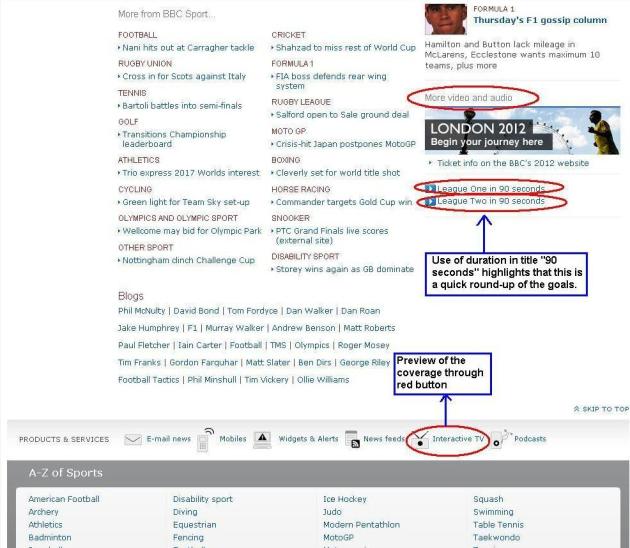Live event blogging: when text and video come together
March 30, 2011 Leave a comment
Live event blogging was originally conceived as a substitute for video coverage- a way of keeping web users up to date in the absence of any pictures.
It started in the mainstream sphere through sports coverage- a chance for people in the office or without Sky to access some form of coverage.
Its success is clear- a simple look at the Guardian Sport website shows that whenever live sport ‘minute by minute’ coverage has been available on any given day, it invariably is one of the most read items. As you can see from the image (right) – today’s live coverage of the India vs Pakistan cricket World Cup match is the most viewed page in the sports section.
More recently the phenomenon has moved to news coverage. Staying with guardian.co.uk, they are currently running Middle East daily live blogs, as well as their regular politics live feed.
But, crucially, video content and live blogging do no have to exist entirely in separation; particularly in journalism, where holding the rights to various sports’ is not necessary to stream video content.
This screenshot from bbc.co.uk demonstrates how successfully text and video can be integrated into live event coverage
 Here, text, graphics and tweets are used to augment video feeds from BBC World and the BBC News Channel, to add an extra dimension to the news coverage. Additional reports and viewer feedback further build on the video journalism.
Here, text, graphics and tweets are used to augment video feeds from BBC World and the BBC News Channel, to add an extra dimension to the news coverage. Additional reports and viewer feedback further build on the video journalism.
Sky News’s ‘Live Plus’ service, available via skynews.com offers a less text rich service. Instead of a timeline of text updates for major events Sky tends to use tweets from their own journalists to build up a picture of the news to add to their video content.
 As is visible from Sky’s screenshot, they also offer users the opportunity to ‘Chat’ via Facebook during political events- further incorporating social media into the experience.
As is visible from Sky’s screenshot, they also offer users the opportunity to ‘Chat’ via Facebook during political events- further incorporating social media into the experience.
It is clear, therefore, that the recent developments in the online coverage of live events have blurred the divide between traditional web journalism and live video content.
They exist not in separate spheres but instead in symbiosis- with each adding to the others’ strengths.













